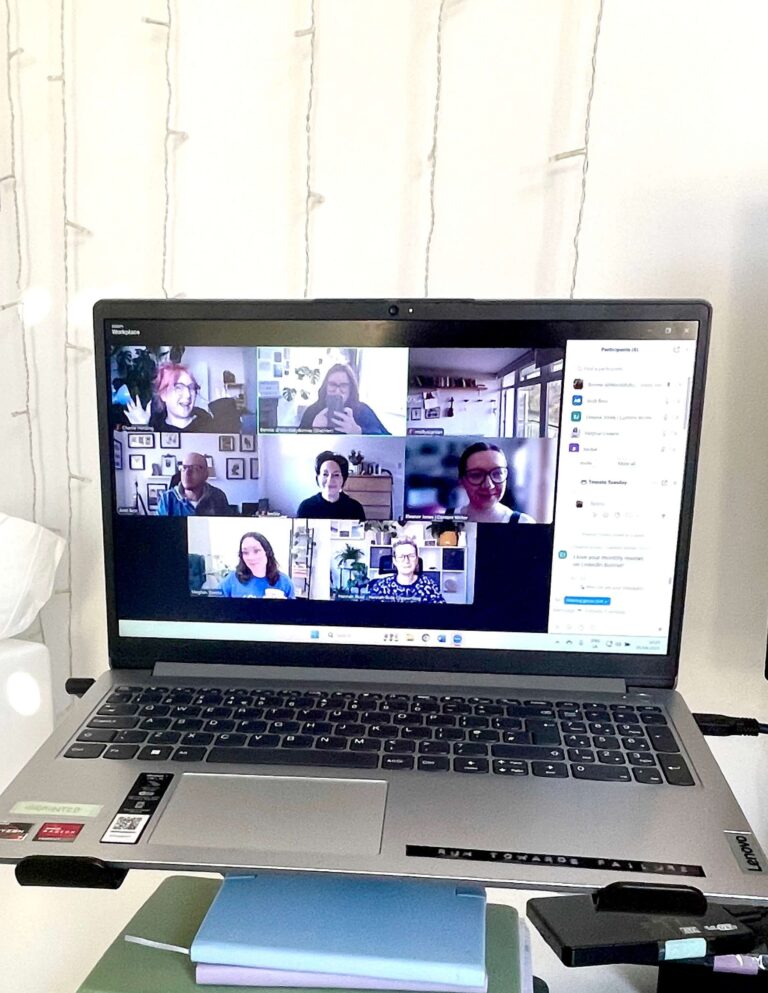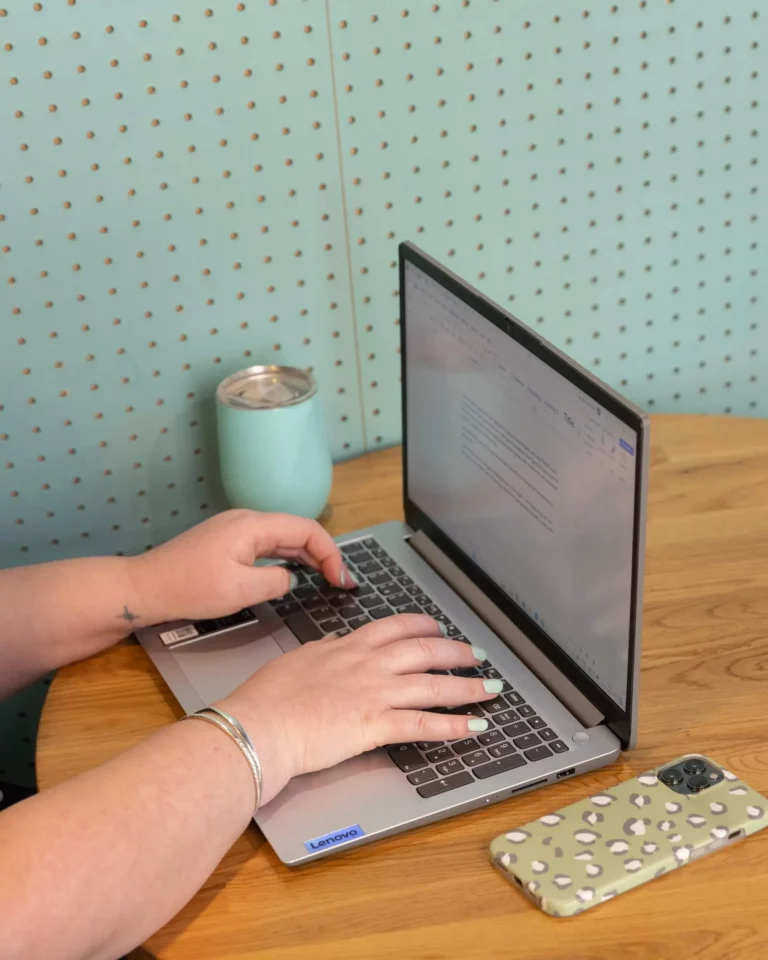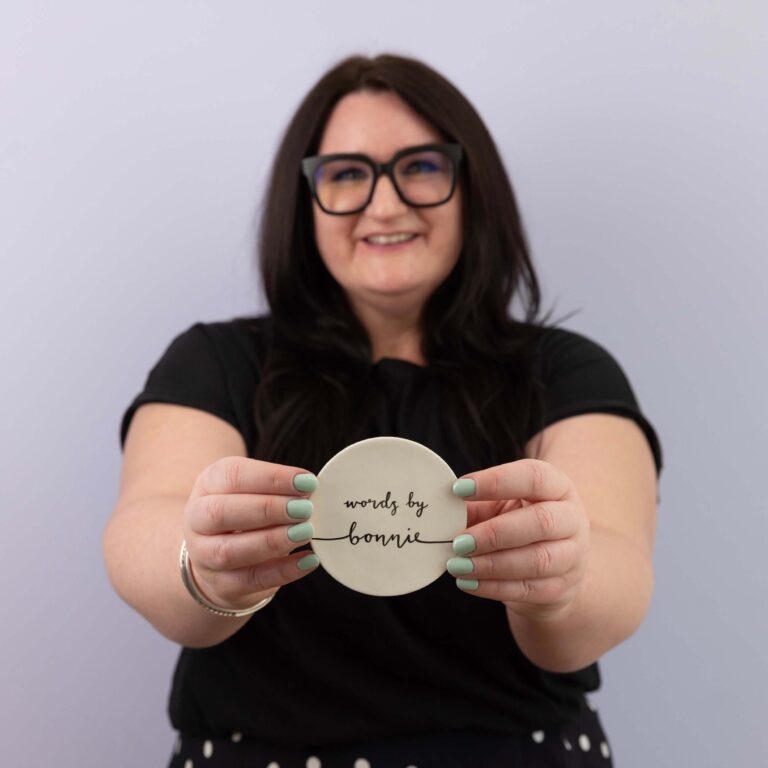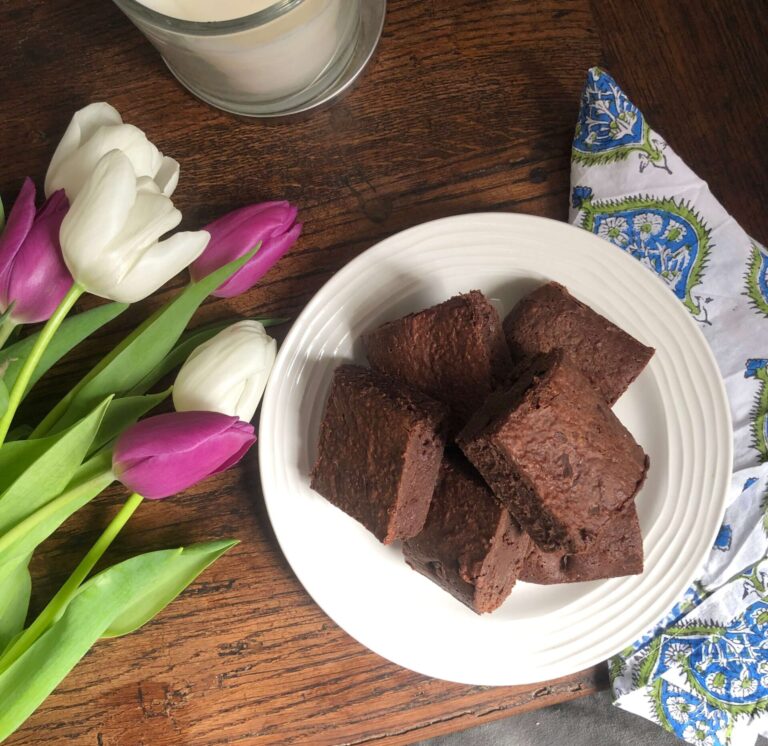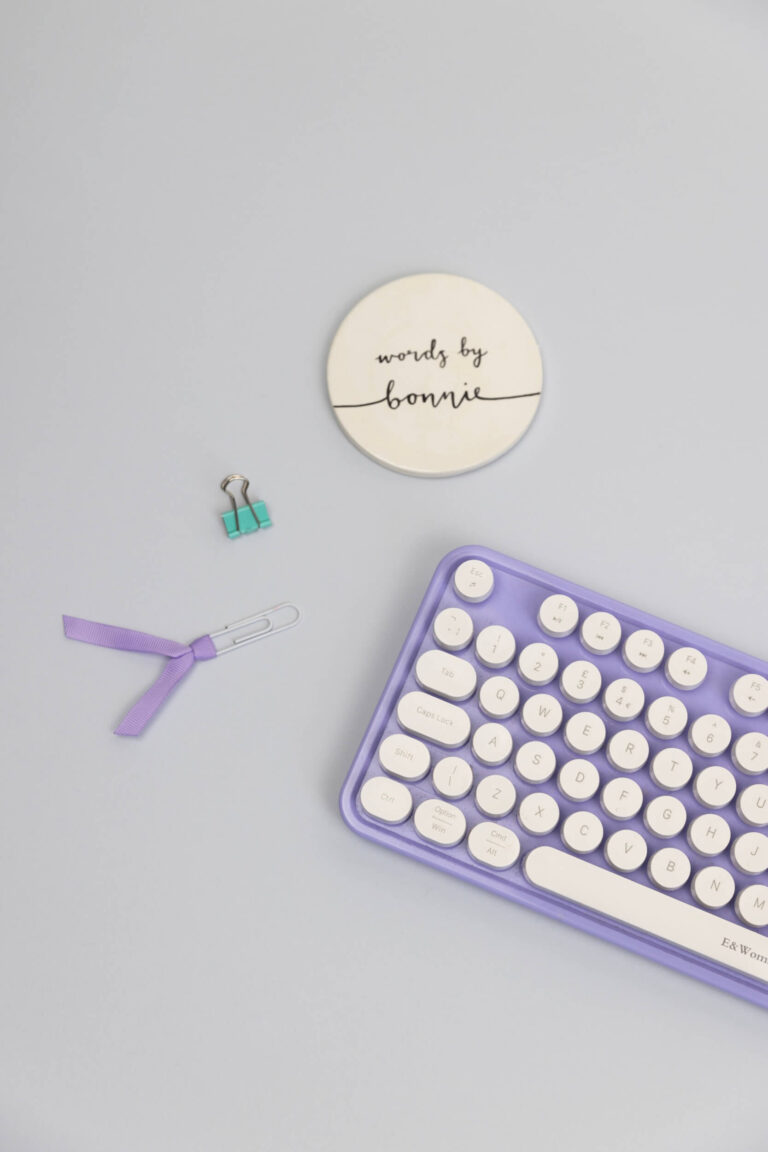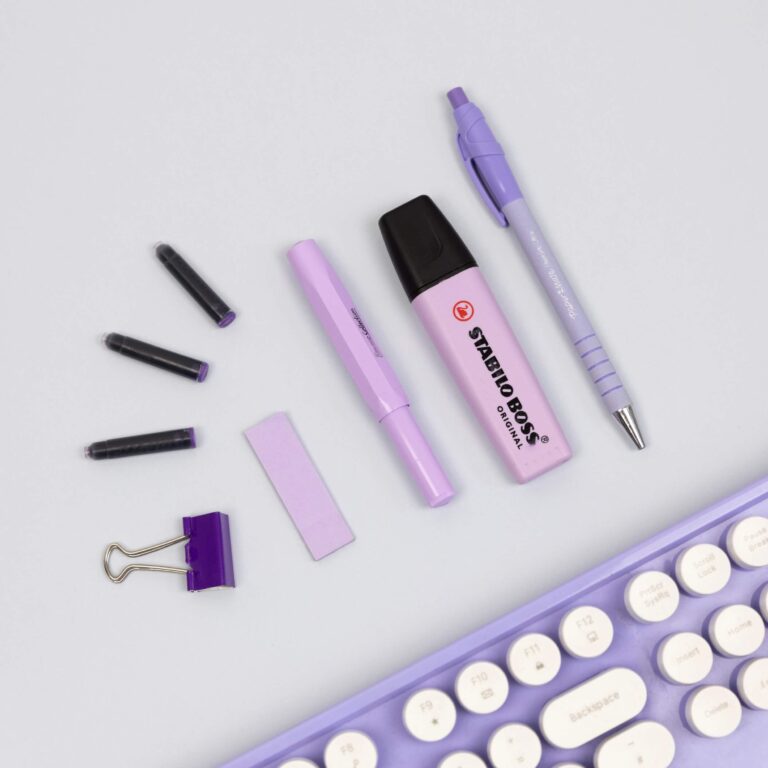Writing your own ‘About’ page on your website is a super tricky job. It’s meant to be about you, the business owner, but it’s not really about you.
Small biz owners make the mistake of writing their life, job, & career history. Mostly because it’s hard to know what to include when you’re so close to it all.
There’s the awkward line to walk sounding qualified and confident, but not braggy or arrogant. The secret to ‘About’ pages is to only include what your customer needs to know. You want them to like, know, and trust you. Anything else is a distraction, so keep it brief, clear, & focused.
I love writing ‘About’ pages for my small business clients. Perhaps the best bit is I know they’d never write in that way about themselves. We tend to revert to ‘boring’ and ‘timid’ when we write about ourselves. Since I can see how objectively great my client is, I get to celebrate them and showcase what they do, with full confidence and clarity. It’s brilliant.
So, in this blog you’ll find step- by- step advice to write your own ‘About’ page.
If you give it a go and hate every step of it, don’t be alarmed. Writing about yourself is absurdly difficult. Check out my website copywriting strategy session where you and I can work together on it. Alternatively, I recorded and ‘About’ page webinar which you can download to support you to do your own. It’s full of specific tips and advice.
Before exploring those steps, give DIY-ing your ‘About’ page a go!
Writing your own ‘About’ page tip 1: Get the basics right
As with all good copywriting, there are some pretty straightforward “rights” and “wrongs” for writing a good ‘About’ page. Regardless of your industry or your audience, your ‘About’ page should be:
- Personal, but not too personal
- Professional, but still warm
- In no way salesy, but also persuasive
- Informational, but not boring
- Prove your qualifications, but not be braggy
- Authentic, and not cringey!
This little list right here shows why it’s hard to write an ‘About’ page. There’s a great deal of delicacy needed. It’s a balancing act of writing just enough of the right information. I love it for that exact reason- the nerdy nuance.
Writing your own ‘About’ page is so difficult, mostly because you are too close to it all. It’s impossible to be objective about yourself.
A good place to get started is to do a little research. You’re on a quest to find “good” and “bad” ‘About’ pages. Check out your competitors, copywriters, and your favourite brands. Keep notes of what you like and how you feel when you’re reading. It’s also helpful to note down what you don’t like so you can avoid it when you start writing.
Importantly, this is not about copying. You’re looking for inspiration and finding your voice. When you find ‘About’ pages you authentically connect with you can think about making it your own.
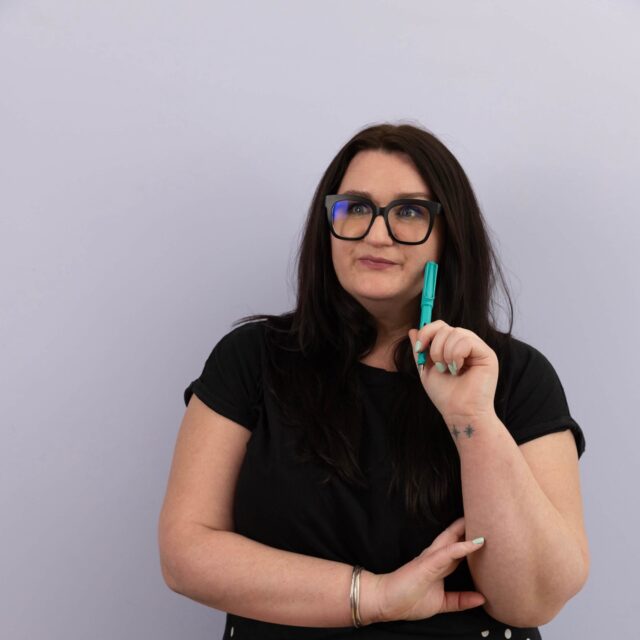
Writing your own ‘About’ page tip 2: It’s time for some scribbling
So, you’ve got a bunch of ideas for your ‘About’ page from your research. Perhaps in a very cute little notebook. Turn to a fresh page (or find some post- its) to start writing about you and your business. Personally, I love a mind- map or a list. Especially in this initial brain- dump stage. Just let the pen move over the page and write down what comes to mind.
Look for facts and fun:
Facts are your friends. What are your qualifications and experience? What have clients said about you? Write this gold down! Fun is also your friend. Do you have any little stories which give an insight to your personality? Something like how you spend your day or your favourite hobby? What was the moment you decided to start your business? What happened at your first networking event or your first market?
These “provable” statements mean you’re naturally writing something non- cringey and authentic.
Think about your brand:
- Is it rebellious and feisty? If so, mention details which deliberately show off your kick a$$, unapologetic vibes.
- Is it calm, gentle, peaceful? If so, write about your dreamy mornings. “My days start with a green tea at 5, and journaling ‘til 6…”
- Is it trusted and inspiring? If so, tell a story about your qualifications. “I’ll never forget the feeling of my professor handing me my certificate…”
This might feel overwhelming, but take your time. Memories will pop into your head randomly and you can add to your notes when they do. Don’t try to decide what’s good or bad to include at this stage. They editing comes later in the process.
Writing your own ‘About’ page tip 3: Plot out the essential information
While each ‘About’ page should be bespoke to the individual business owner, there are parts which are universally essential. A good ‘About’ page will have this information in some form/ layout:
- Your qualifications
- Your experience
- An insight into your personality
- An understanding of your values
- Why you love your service/ products
- Who you work with and why
- Where you are based geographically
Use this ‘essential information’ as a checklist. Match up all the notes you’ve gathered about yourself with the essential information. Before you know it, you’re starting to flesh out your ‘About’ page structure!
For example, if you’ve written about your favourite way to spend a day, it’ll align with an “essential information” section. For me, a great day includes going to the Tobacco Factory Market in Bristol for an oat latte before wandering to Storysmith and Mon Pote on North Street. This shows how much I love small businesses (my dream audience). It shows I’m based in Bristol (also a dream audience). It gives an insight to me as a person (book lover, trinket lover, coffee lover).
A key aim of an ‘About’ page is to tell your reader all about you and what you do, while being authentic & interesting. Much better than starting with ‘in 2019 I left my job as…’ which is a bit stale and boring.

Writing your own ‘About’ page tip 4: The terrible first draft
Right! You’ve been inspired by other people’s ‘About’ pages, you’ve got loads of authentic, non- cringey notes about yourself, and you’ve not a loose structure. You’re on to a winner, pal!
It’s first draft time! Which, importantly, is going to be pants. Really, it is. Every first draft is a little big rubbish and that’s ok! It’s how you get to the (much better) second draft, after all.
Here are some tips to consider as you get typing.
- Start with the headlines
You need one for each section. These tell both Google and the reader what the section is about. Find a dramatic hook, or interesting titbit to begin. - Aim for short snippets of text mostly, and a few chunkier paragraphs
You can refine them at a later stage but keep an eye on how much you’re writing. It’s easy to get carried away with detail - Think about website page design
Which bits could be bullet points, and what could be a banner? Visually mix- up your text to keep things interesting - Write things like [ADD FUNNY LINE HERE] or [LINK NEEDED]
These are little reminders for yourself to come back to this section. It’s annoying to pause your writing flow to find details - Forget chronology!
You absolutely do not need to start at the beginning, and then move to the middle, and end at the end. Cherry- pick the most relevant details.
But what does this look like?
Take it section by section. Some parts can be straightforward but tell a couple of stories where possible.
- Imagine you’re an artist. Use your ‘About’ page to write (briefly) about your creative process and preferred materials. “Just like the concentrated hues of [brand of paint] I can get pretty intense about…”
- If you were a hairdresser, you might write about awards you’ve won, or how you love meeting people, and why your location right in the centre of town is so great.
- A travel agent might tell a story about a moment that changed their life. Something like ‘the sun was rising over the savannah, the lions sleepily stirred, and I knew I had to make travel my career…’
- A high- end clothing brand might tell the story of their early designs. ‘[Brand name] is known for the iconic angular structure of their garments, inspired but the architecture viewed from their Berlin studio’.
Important tip: silence your inner critic! The first draft is called “the terrible first draft” for a reason. Be kind to yourself, and just get it written. You can make it brilliant in the edits.
Writing your own ‘About’ page tip 5: The brutal edit
Imagine I’m welcoming you to a huge bedroom suite in MTV Cribs. This is where the magic happens.
Leave your complete ‘About’ page first draft alone for at least an hour, maybe a day. Come back to it with “fresh” eyes and reread it.
It’s time to be brutal. As you finish a sentence or section, ask yourself, ‘does this sentence tell my reader important information?’. Follow up with ‘why would my reader care about this?’. Delete irrelevant sentences, clarify waffly sentences, change up vocabulary, and expand sections when you’ve been too brief.
Here are some things to focus on:
- Be ruthless. Cut at least a third of the words of the overall ‘About’ page. Aim for 500- 1000 words in total
- Make your sentences shorter. Aim for 15- 22 words- ish (use this free sentence length checker)
- Make sure your H1 tag (main headline) has SEO keywords
- Spelling and grammar. Make corrections where needed and check everything you’re not sure about on Google
People often skip this stage, but it really is important. The brutal edit is where you’re cutting out distractions and errors. You’re also really focusing on the gold of your messaging and personality.
Writing your own ‘About’ page tip 6: Pack in some personality
You now have the bones of a lovely ‘About’ page! Congratulations! There’s a teeny risk you’ve made it too formal or too friendly. Getting the balance right is hard.
Here’s how to make your ‘About’ page more authentically ‘you’/ businessy ‘you’:
- Dial up the tone of voice
How do you speak? What words do you say? You’ll find chuffing, lush, super, shiz, yep, and AF all over my website. I really do say these things… in a cool way? - Mention what’s important to you, but not too personal
I reference Bristol, vegan brownies, sleeping in, my love of words, my previous career, and my love of travel. Think about things you might chat to a stranger about at a networking event. - Confidently state your views
Like how you’re LGBTQ+ inclusive, or how you only use vegan/ sustainable products in your business. Yes, you might put people off, but that’s a good thing. Attract your people! - Take out anything which is too revealing
Even though being a parent is a super important part of who you are, be careful about what you mention. Consider what is really relevant. This is true for your relationship, your parents, your childhood, or your health. It’s not that there’s anything wrong with sharing these things. Its more about intentionally including what is important for your customer to know. - Link everything back to your biz, your values, or your skills
Remember, your ‘About’ page isn’t really about you. It’s about what you do, why you do it, and how you do it for your customers. Keep your ‘About’ page as relevant to your business as possible.
This is a tricky stage! Cutting sections, refining your messaging, and being your authentic self is a process. Remember you can edit your ‘About’ page over time.
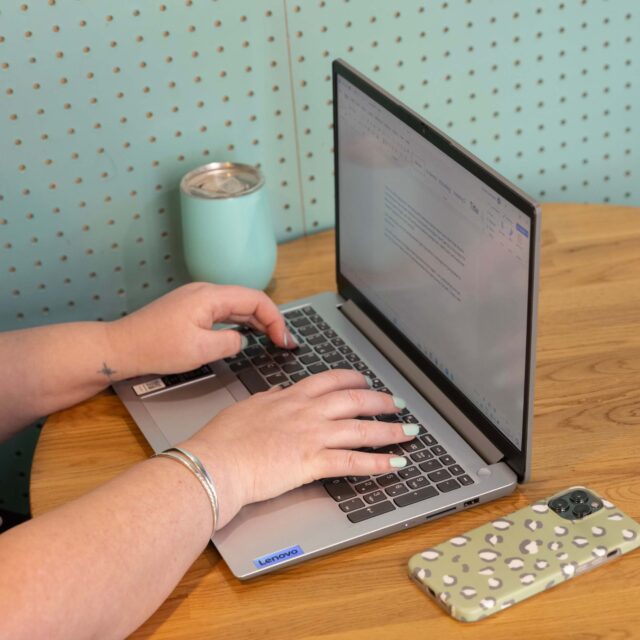
Writing your own ‘About’ page tip 7: Polishing and proofreading
This is the final stage. You’ve made it! Definitely leave it for a little while before your final edit.
Importantly, this is not a ‘brutal’ edit, like the one before. This is a gentle polishing edit. You’re looking to catch typos and any waffly sentences which escaped you the first time.
Since you know this page so well now, your eyes will skip over minor errors. To overcome this, make the text look (temporarily) different. Change the colour from black to something jazzy and bold. Increase the font size and choose a different font. I guarantee you spot a typo or two, even if you’ve just proofread it. Alternatively/ additionally, use the read aloud function on Google docs and Word. Hearing your words read back to you is a great way to spot mistakes. Especially words which are spelled correctly but still wrong, such as from/ form, club/ cub, trough/ through.
Finally, make sure you’ve hit all the “essential information”. Ideally, when your customer reads it, they’ll have a strong sense of who you are, what you do, why you do it, and who you do it for.
Your ‘About’ page is done!
Congratulate yourself! Then find some great pictures, upload the copy, and hit publish on your website. After all your hard work, make sure you get the most out of your copy. Reuse each section of your ‘About’ page as a social media caption, or in newsletter snippets.
Are you really stuck or just not sure if you’re on the right track? Check out this blog on DIY website copy, or this webinar. Alternatively, book a Strategy Session or just get me to write it for you. Delegating is self- care!
